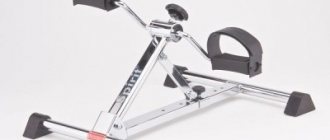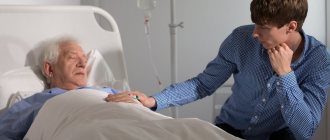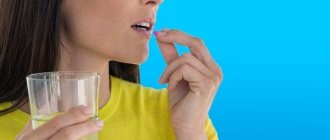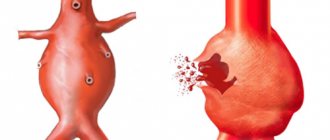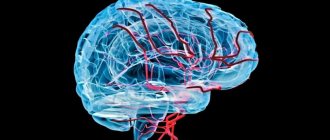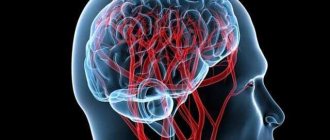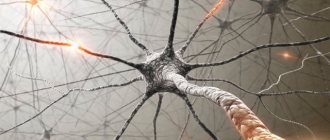Coronary heart disease and exercise
With coronary heart disease, the blood supply to the heart muscle is disrupted due to pathological changes in the coronary vascular system. Most cases of coronary heart disease are caused by atherosclerosis: cholesterol plaques are deposited on the walls of the arteries that supply the heart and narrow their lumen, impeding the flow of blood. Normal blood circulation is restored by coronary artery bypass grafting. During the operation, a healthy segment of the vessel is sutured, bypassing the affected area. As a result, the blood begins to flow in a new direction, and the blood supply to the heart is completely restored.
After bypass surgery, the patient spends a day in the intensive care unit. Then he is transferred to a regular ward, and a period of cardiac rehabilitation begins, which includes special exercises, medication and psychotherapeutic assistance, adherence to a special diet, and giving up bad habits. The more accurately rehabilitation instructions are followed, the faster it is possible to restore normal functioning of the body and return to a full life.
Physical exercise forms the basis of cardiac rehabilitation programs. Training in the postoperative period in cardiac surgery patients has its own specifics: the load here is strictly dosed, sets of exercises are performed with constant monitoring of blood pressure and cardiovascular activity (pulse, ECG). At an early stage, physical exercises of a minimum level of complexity are used. The load volume is systematically increasing.
After discharge
Returning to normal life is necessary for successful rehabilitation, so the sooner the better. Among the recommendations:
— Allowed to drive a car starting from the second month of rehabilitation
— Returning to work is possible in a month and a half. If there is heavy physical work, the period is discussed individually with the doctor; if there is sedentary work, it can be earlier.
— Restoration of sexual activity is also prescribed by a doctor.
Prevention of complications of coronary heart disease largely depends on lifestyle. Patients should quit smoking for life, control blood pressure (for this, doctors teach patients how to measure it correctly), weight, and follow a diet.
A set of exercises in a lying position
At the initial stage of rehabilitation, exercises are performed while lying in bed. The complex consists mainly of various movements of the limbs. It is necessary to ensure that breathing remains free during work, without delays.
- Lying on your back, stretch your legs, relax your arms. Bend your feet: first stretch your toes out, then lift them up. Do six reps.
- Bend your hands: move them outward and return them back. Repeat six times.
- Bring your hands to your shoulder joints. Spread your elbows, inhale. Place your hands on the bed and exhale. Repeat four times.
- Turn your arms at your sides so that your palms are facing the ceiling. Breathe in. Raise your arms, stretching forward slightly. Turn your palms again, this time down, and bring your hands to your knees. Tighten your legs, lift your head and exhale. Repeat the exercise four times.
- Take turns bending your lower limbs at the knees, while keeping your feet off the bed. Perform six to eight repetitions.
- Straighten your limbs. Turn your arms so that your palms are facing the ceiling and spread them to the sides. Simultaneously rotate your feet outward. Accompany the movements with inhalation. As you exhale, turn your feet inward and your palms down. Repeat six times.
- Bend your legs and swing them left and right for six repetitions.
- Keep your legs bent. As you inhale, raise your arm and as you exhale, extend it towards your opposite knee. Repeat six times.
- Place your feet on the bed. Move your hand to the right and turn your head in the same direction. At the same time, move your left leg sideways. Make movements while inhaling. Exhale and return to the original position. Repeat with the other arm and leg. Do six repetitions in total.
- Raise your bent arms. Clench your hands into fists and rotate them at the wrist joints in and out. After 5-6 workouts, you can try to perform rotations of the feet synchronously with the rotation of the hands.
- Bend your knees. Raise one leg and bend it. Return it to its original position. Repeat with each leg six times.
- Straighten your limbs. As you inhale, place your right palm on your head. As you exhale, touch the opposite side of the bed with the same hand. Repeat with each hand four times.
- Extend your arms to your sides. Squeeze and then relax your buttocks for six repetitions. Tighten your leg muscles along with your gluteal muscles.
- Complete the set of exercises with smooth raises of your arms: while inhaling, raise your limbs, while exhaling, lower them. Three repetitions are enough.
Rehabilitation exercises in a sitting position
The following set of exercises is also used for early rehabilitation, but it requires a little more effort since it is performed in a sitting position.
- Sit on a chair, lean on the back. Raise your hands to your shoulder joints, move your elbows to the sides - do all this while inhaling. Exhale and place your hands on your knees. Do six reps.
- Place your feet on your heels and toes, accompanying this by squeezing and unclenching your hands. Repeat ten to fifteen times.
- As you inhale, straighten your arms and raise them up. As you exhale, lower your limbs to your sides. Do six reps.
- Slide your feet along the floor, moving them away from you and towards you. Do not lift your soles off the floor surface. Repeat the movement ten times.
- Extend your arms to the sides while inhaling. Exhale, lower your hands to your knees and lean forward. Do six times.
- Sit on the edge of the seat: legs bent, arms down. As you inhale, move your arm and the opposite leg to the side. Return to the original position. Repeat with the other arm and leg. Do up to ten repetitions in total.
- Place your arms loosely at your sides. Raise one shoulder, lower the other. Do 5-6 such movements.
- Spread your arms wide while inhaling. Then grab your knee with your hands and pull it towards your chest, lower it. Repeat 4-6 times.
- Sit on the edge of the seat, place your hands on your belt. Bring your elbows together in front of you. Bring your shoulders forward, lower your head down. Exhale, spreading your elbows and turning your head first in one direction, then in the other. Repeat the exercise six times.
At later stages of rehabilitation, other types of physical exercises are added to therapeutic exercises, such as walking, swimming, cycling (an exercise bike), light jogging, and skiing.
and resection of post-infarction aneurysm of the left
Preoperative period.
The objectives and contraindications are the same as for heart defects. The PH technique was developed depending on the patient’s belonging to one of three groups according to the WHO classification: group 1 includes patients with angina pectoris without previous myocardial infarction, group 2 - with post-infarction cardiosclerosis and group 3 - with post-infarction aneurysm of the left ventricle . In patients of group 1, the motor regimen includes exercises for muscle groups performed with full amplitude, dynamic breathing exercises. Duration of classes - 20-25 minutes.
For patients of the 2nd group, a complex of therapeutic exercises consists of breathing exercises and exercises for small and medium muscle groups, performed slowly; individual movements can be performed at an average pace, but with a small amplitude. Breathing exercises (static and dynamic) must be alternated with general developmental exercises and pauses for rest. During therapeutic exercises, you should not allow your heart rate to increase by more than 10% after exercise. Duration of classes - 15-20 minutes.
In patients of group 3, restrictions are necessary in the complex of physical exercises due to the risk of developing thromboembolism.
Patients can perform exercises with incomplete amplitude for small and medium muscle groups. After 2-3 exercises, it is recommended to relax the muscles and take a short break to rest. Duration of classes is 10-15 minutes.
Physical rehabilitation: from 21 days
From this time on, the nature of the patient’s physical activity changes. You can switch to low-intensity strength training, as well as interval training. For each patient, a separate training program is prescribed by a physical therapist or a certified trainer. It is necessary to focus not only on the patient’s level of fitness, but also on the condition of postoperative scars. It will be good to start doing health training, jogging, swimming, walking. Among sports disciplines, volleyball, basketball, and tennis are not recommended for life.
Physiotherapy is supplemented with halotherapy, medicinal electrophoresis (with panangin, papaverine) on the cervical-collar area, and electrostatic massage on the surgical area. The duration of the course is just over a month.
To prevent post-infarction cardiosclerosis, it is necessary to repeat this course 1-2 times a year.
6.1.3. Exercise therapy for surgical interventions on large vessels
The objectives of the preoperative period are: improving the functionality of the cardiovascular and respiratory systems; involvement of collaterals in the work; training in exercises in the early postoperative period. LH is performed as in the preoperative period during surgery
tive interventions for heart defects.
In the postoperative period, the same 5 motor modes are used (I A, I B, II A, IIB and III) as after surgical interventions on the heart associated with defects. This division of modes into separate periods of time is used in order to gradually increase the degree of load, in order to avoid a sharp transition from one motor mode to another.
During surgical interventions on blood vessels, in addition to ob-
The main points in the methodology for conducting PH classes will be differences depending on the location of the vessel and, accordingly, access to it. Thus, in case of pathology of the abdominal aorta, a laparotomy is performed, so the complications observed after surgical interventions on the abdominal organs will also apply to operations performed on the vessels. In accordance with this, exercise therapy should be used. The same applies to operations on the aortic arch, when a thoracotomy is performed. During surgical interventions on the vessels of the skull, neurological symptoms may appear, then the postoperative period will be built taking into account this pathology.
One of the conditions for the normal functioning of the cardiovascular system is oxygen saturation at the proper level. Breathing exercises for the heart and blood vessels will certainly give a positive result. Useful and accessible exercises can be performed by people of different ages with varying degrees of general physical fitness. The main condition is regularity of classes.
Breathing exercises for cerebral vessels
The basic complex written above can also be used for breathing exercises designed to train the blood vessels of the brain. The main thing in this matter is not to overdo it.
If you feel dizzy or uncomfortable, you should stop exercising.
To achieve the best results, it is recommended to do gymnastics twice a day for 10-15 minutes. You can add one more exercise to the basic complex.
- Take your starting position sitting on a chair. Place your hands on your knees, palms up.
- Open your mouth slightly and touch the tip of your tongue to the upper palate.
- Breathe evenly. As you inhale, say the word “so” (without using your voice), and as you exhale, say “hum.”
- Make sure the air flows through both your mouth and nose.
Breathing exercises for vegetative-vascular dystonia
Let us immediately make a reservation that it will not be possible to get rid of vegetative-vascular dystonia with the help of breathing exercises alone. But regular exercise will help significantly alleviate the condition.
- Complete the basic complex.
- Place one hand on your stomach and the other on your chest.
- Breathe evenly through your nose for several minutes, trying to pull your stomach in as much as possible during each exhalation, and stick it out during inhalation.
- Using your hand to control the stillness of your abdomen, breathe through your chest for several minutes. With each inhalation, the chest should expand as much as possible. The air flow passes only through the nose.
How to heal open wounds after CABG surgery?
The leading incision for CABG is made in the middle of the chest. The next one is done on the leg to take a vein (or veins) or on the forearm to take an artery. The first time after surgery, the sutures are treated with antiseptic solutions - chlorhexidine, hydrogen peroxide. By the beginning of the second week, the sutures can be removed, and by the end of it, the area can be washed with soap. Complete healing of the sternum occurs only after several months, which at first causes pain in the operating area. In the lower extremities, burning pain may occur at the site of the vein taken. They disappear during the process of restoring blood circulation.
